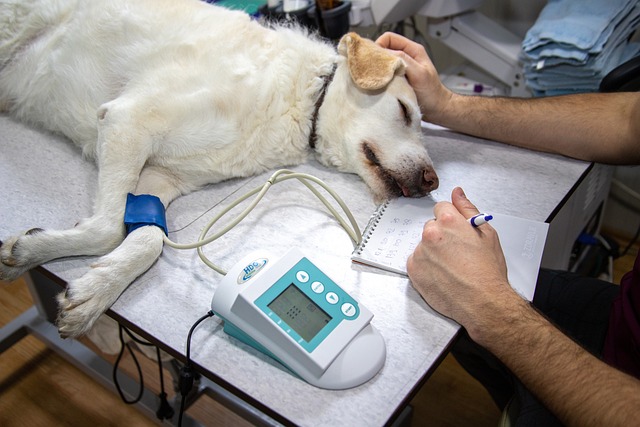Veterinary Assistant Jobs: Roles, Skills, and Common Workplaces
Veterinary assistants support animal care operations by assisting with basic procedures, maintaining clean environments, and handling administrative tasks. This guide outlines the typical responsibilities of a veterinary assistant, essential skills for the role, and common workplaces such as clinics, shelters, and animal hospitals. It offers a clear overview for those considering entry into this animal care field.

What are the primary responsibilities of a veterinary assistant?
Veterinary assistants perform a wide range of tasks to support the daily operations of animal care facilities. Their primary responsibilities include:
-
Animal care: Feeding, bathing, and exercising animals under the supervision of veterinarians or veterinary technicians.
-
Facility maintenance: Cleaning and disinfecting animal cages, examination rooms, and surgical areas to maintain a hygienic environment.
-
Assistance during examinations: Restraining animals during exams, treatments, or sample collections.
-
Medication administration: Providing medications as directed by veterinarians.
-
Administrative tasks: Scheduling appointments, maintaining patient records, and answering phone calls.
-
Inventory management: Monitoring and restocking medical supplies and equipment.
These diverse responsibilities make the role of a veterinary assistant both challenging and rewarding, requiring a combination of practical skills and compassion for animals.
What skills are essential for success as a veterinary assistant?
To excel in this animal care career, veterinary assistants should possess a unique blend of technical knowledge, interpersonal skills, and physical capabilities. Key skills for vet assistants include:
-
Animal handling: Proficiency in safely restraining and managing various animal species.
-
Attention to detail: Ability to follow instructions precisely and maintain accurate records.
-
Communication: Clear and effective communication with team members and pet owners.
-
Empathy: Compassion for animals and their owners, especially in stressful situations.
-
Physical stamina: Capability to stand for long periods and lift heavy animals or equipment.
-
Basic medical knowledge: Understanding of animal anatomy, physiology, and common medical procedures.
-
Adaptability: Flexibility to handle unexpected situations and changing priorities.
-
Time management: Efficient multitasking and prioritization of tasks in a fast-paced environment.
Developing these skills through education, training, and hands-on experience will greatly enhance a veterinary assistant’s effectiveness and career prospects.
Where do veterinary assistants typically work?
Veterinary assistants can find employment opportunities in various animal care settings. Common workplaces for vet assistants include:
-
Private veterinary clinics: Small to medium-sized practices focusing on companion animals.
-
Animal hospitals: Large facilities providing comprehensive veterinary care, including emergency services.
-
Animal shelters and rescue organizations: Assisting with the care of abandoned or rescued animals.
-
Zoos and wildlife rehabilitation centers: Supporting the care of exotic and wild animals.
-
Research laboratories: Assisting with animal care in scientific research settings.
-
Mobile veterinary services: Providing on-site care for farm animals or house calls for pets.
The diverse range of work environments allows veterinary assistants to choose settings that align with their interests and career goals, whether it’s working with domestic pets, exotic animals, or in specialized fields like wildlife conservation.
How can one become a veterinary assistant?
Becoming a veterinary assistant typically involves the following steps:
-
Complete high school or obtain a GED: Most employers require a high school diploma or equivalent.
-
Enroll in a veterinary assistant program: Many community colleges and vocational schools offer certificate or associate degree programs in veterinary assisting.
-
Gain hands-on experience: Participate in internships or volunteer at animal shelters to build practical skills.
-
Obtain certification: While not always required, certification from organizations like the National Association of Veterinary Technicians in America (NAVTA) can enhance job prospects.
-
Apply for entry-level positions: Start your career by applying to veterinary clinics, animal hospitals, or other animal care facilities.
-
Continue education: Pursue ongoing training and education to stay current with industry advancements and expand career opportunities.
By following these steps, aspiring veterinary assistants can build a strong foundation for a successful career in animal healthcare.
What is the job outlook and salary potential for veterinary assistants?
The job outlook for veterinary assistants is generally positive, with steady growth expected in the coming years. According to the U.S. Bureau of Labor Statistics, employment of veterinary assistants and laboratory animal caretakers is projected to grow 19% from 2021 to 2031, much faster than the average for all occupations.
As for salary potential, veterinary assistant earnings can vary based on factors such as location, experience, and workplace setting. Here’s a general overview of salary ranges:
| Experience Level | Salary Range (USD) |
|---|---|
| Entry-level | $22,000 - $28,000 |
| Mid-career | $28,000 - $35,000 |
| Experienced | $35,000 - $45,000 |
| Senior-level | $45,000+ |
Prices, rates, or cost estimates mentioned in this article are based on the latest available information but may change over time. Independent research is advised before making financial decisions.
It’s important to note that salaries can be higher in certain geographic areas or specialized settings, and additional certifications or advanced training may lead to increased earning potential.
What are the advancement opportunities for veterinary assistants?
Veterinary assistants have several paths for career advancement within the animal care field. Some potential opportunities include:
-
Becoming a certified veterinary technician through additional education and licensing.
-
Specializing in a particular area of veterinary medicine, such as dentistry or emergency care.
-
Moving into supervisory or management roles within veterinary practices.
-
Transitioning to related fields like animal behavior or wildlife conservation.
-
Pursuing entrepreneurial opportunities, such as pet sitting or grooming services.
By continuously developing skills and seeking new challenges, veterinary assistants can build rewarding, long-term careers in animal healthcare and related industries.
In conclusion, veterinary assistant jobs offer a fulfilling career path for those passionate about animal care. With diverse responsibilities, a range of work environments, and opportunities for growth, this profession provides a solid foundation for individuals looking to make a positive impact in the lives of animals and their owners. By understanding the roles, required skills, and potential career trajectories, aspiring veterinary assistants can make informed decisions about pursuing this rewarding animal care career.




